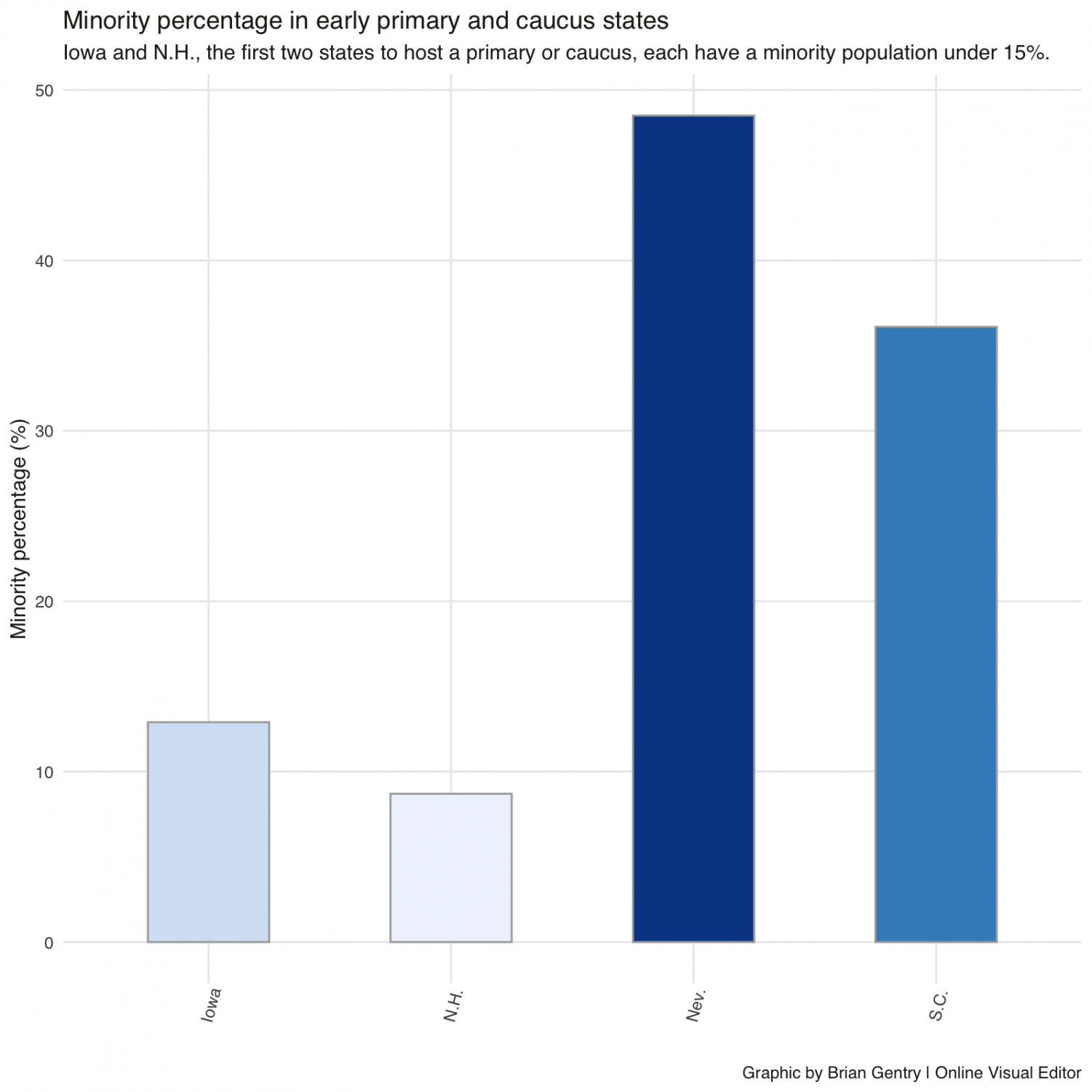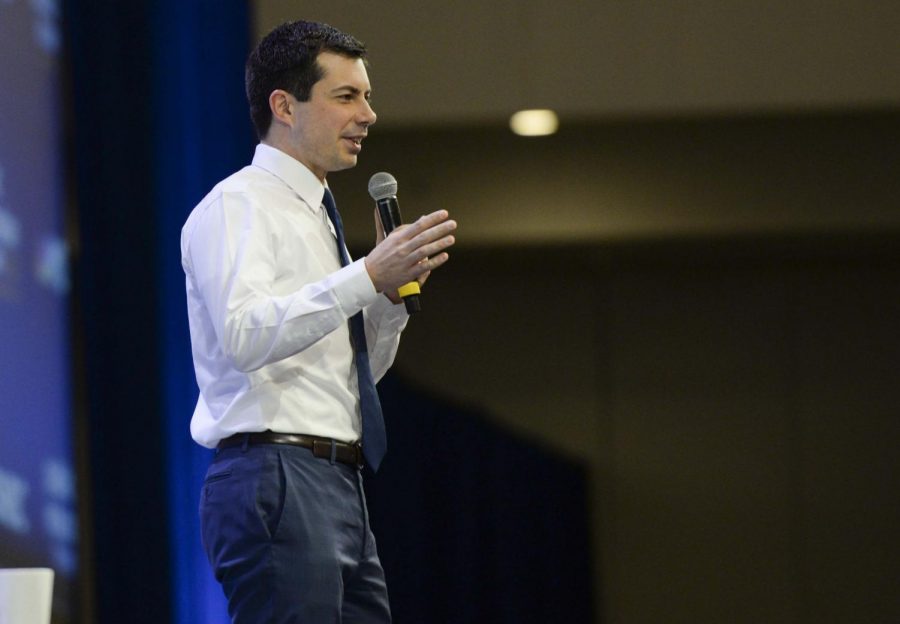Opinion | “IOWAit” a better primary system
Sarah Cutshall | Visual Editor
In the Iowa Caucus, Pete Buttigieg (pictured) received 26.2% of the votes, and Bernie Sanders received 26.1%.
February 10, 2020
Last week’s Iowa caucuses were an absolute disaster.
Who knew that a voting process that works about the same as picking teams in an elementary school gym class wouldn’t go totally smoothly? It sounds like a foolproof process to me! Except it definitely wasn’t this time. Between human errors, app failures and straight-up incompetence, vote counts weren’t released at all on caucus night. Results were instead released in waves in the following days, leading to confusion, anger and conspiracy theories on social media.
The Iowa caucuses were a fiasco that no one wants to witness again. Last week made it very clear that the Democratic Party needs a better system for choosing a nominee. It’s time we do away with caucuses, switch to a ranked-choice voting system instead and change which states go first in the primaries.
Ranked-choice voting is the best way to ensure the candidate that has a majority of support from the voters wins elections. Voters rank candidates in order of preference, then votes are counted in rounds to determine the winner. If a candidate holds the majority in the first round, they’re declared the winner. If no candidate reaches a majority in the first round, the candidate with the least amount of votes is eliminated and the ballots are then recounted with the voters who ranked the eliminated candidate first having their second choice count instead. This goes on until a candidate reaches a majority and wins the election.
Caucuses work similarly, except instead of voters being able to easily rank candidates and then go home and wait for results, they have to stand in a church basement or a school gym for three hours. Still, both caucuses and ranked-choice voting value having second choices and work in rounds. In a caucus, caucus goers line up with other supporters of their candidate at their caucus location. If their group is comprised of at least 15% of the people there, they’re deemed viable and are able to move onto the final round. If they do not reach 15%, their candidate isn’t viable and supporters have to realign to another candidate.
Delegates are then awarded to candidates based on the amount of voters that they receive at each caucus location after the final alignment. In cases of a tie, coin flips are used to determine who gets an extra delegate — which is not exactly the most democratic system.
Ranked-choice voting eliminates the hassle that caucuses put voters and volunteers through. It still involves having multiple choices, which defenders of caucuses point to as a positive thing that forces candidates to be more civil with each other as they need to be able to pull from their own coalition as well as those of other candidates. But ranked-choice voting doesn’t force you to play musical chairs with all your neighbors on a weeknight. Plus, it would just make the winner of Iowa the person who got the majority of support and would then award delegates based on that, eliminating ridiculous coin tosses and making it more difficult to have mathematical errors.
Turnout was also pretty low in the Iowa caucuses this year. Some of that could be due to candidates not inspiring a higher level of turnout, but part of it is due to the fact that caucuses aren’t convenient for many, especially parents with young children and disabled individuals. Ranked-choice voting, on the other hand, is more accessible since it’s a quicker process than caucuses and doesn’t force people to stand around for hours. Ranked-choice voting is also shown to increase turnout in primaries by promoting more positive campaign strategies and eliminating some of the perceived costs associated with voting, like wasted votes, according to a study conducted by the University of Missouri-St. Louis.

Another criticism of the Iowa caucuses is that Iowa’s population is 90% white. It’s not exactly the most diverse state out there, and it’s certainly not very representative of the Democratic Party or of the country as a whole.
Having an overwhelmingly white state like Iowa go first can often leave out candidates of color. This Democratic primary was hailed for its diversity, but only one candidate of color was left going into Iowa, Andrew Yang. Sen. Kamala Harris, D-Calif., Cory Booker, D-N.J., and Julian Castro all had to drop out prior to Iowa yet Pete Buttigieg is a front-runner, in part due to his performance in Iowa, despite the fact that he’s doing horribly with voters of color.
Ranked-choice voting can help to solve this issue too — although we really should also have a more representative state go first — as several studies have shown that ranked-choice voting increases representation of women and people of color in public office. This is partially due to the fact that ranked-choice voting increases turnout and allows candidates to run without splitting the vote.
Regardless, after the election in November Democrats need to overhaul the primary process and fix the system. If we want to pick the best nominee possible, we need to eliminate caucuses and switch to a ranked-choice voting system.
Devi primarily writes about politics for The Pitt News. Write to her at dvr7@pitt.edu and follow her on Twitter for more hot takes @DeviRuia.




